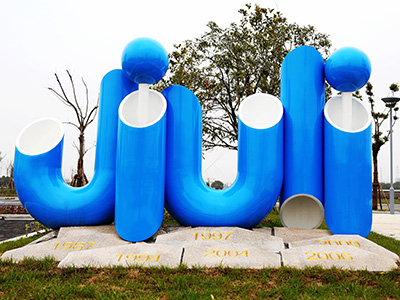Shale oil and gas, tight oil and gas and coal bed gas
They are classified as unconventional oil and gas because of their technical difficulty, high cost and poor reservoir properties. James W.Schmoker from the United States first proposed the concept of continuous oil and gas accumulation. The above types of oil and gas belong to continuous oil and gas accumulation, which is the most popular content of unconventional oil and gas discussed at present. It is also the most rapid and serious situation in which the ancient oil reservoir is completely destroyed. If the exposure time is short and the overlying new strata continue to deposit, the field can be formed.
2.1 Shale gas and tight gas
There are three types of unconventional gas: shale gas, tight gas and coalbed gas. The reservoir properties of unconventional gas and conventional gas are gradually changing.

Shale gas exists in shale rich in organic matter in adsorbed and free states. Shales consist mainly of clay, containing a small number of silt grains, and may have thin layers of carbonate rocks with very low permeability, which are in effect source rocks. Rich in organic matter, most of the gas is of thermal origin, but some of it is biogenic. At maturity, some of the natural gas generated by this source rock has been discharged and migrated to adjacent reservoirs, while the rest remains in shale. Shale plays a role as reservoir, but its porosity and permeability are low, with permeability of nanodarcy (< 1×10-9 μm2) and porosity of 6%-12%.

The distribution of shale gas is not controlled by traps, and the distribution range of shale gas is basically controlled by the distribution range of effective source rock. The challenge for shale gas is not to find out if it contains gas, but to find the sweet spot, or "sweet spot," that determines its high yield and recovery.
Many parameters are very important in shale gas, such as total organic carbon (TOC) content, kerogen type, thermal maturity, mineral composition, lithology, brittleness, natural fractures, stress state, reservoir location and type of gas, thermogenic or biogenic system, sedimentary environment, thickness, porosity, and pressure.
There are three types of natural gas storage in shale :(1) free gas, including storage in shale matrix pores and natural fractures; (2) adsorption gas, including chemical adsorption and physical adsorption; (3) dissolved gas, dissolved in asphalt. Free gas is produced first, and adsorbed gas is produced with the decrease of pressure. The quantity of the latter is greater than that of the former, and no water is produced in the production.
Due to the characteristics of very low porosity and very low permeability, the exploitation methods of shale gas are all horizontal Wells and hydraulic fracturing to produce natural gas resources with commercial value. North America has a great depth of research on shale gas, and has formed a supporting technology. U.S. shale gas production has reached 6.35 Tcf per year and is forecast to reach 13.5 Tcf by 2035.
In June 2013, the United States energy information administration data, evaluated the 41 countries other than the United States, 137 shale formation evaluation results, the risk after the geological resource of 3.1138 trillion cubic feet, risk after technical recoverable resource of 6.634 quadrillion cubic feet, plus the 3.5782 trillion cubic feet respectively and 7.295 quadrillion cubic feet. Shale gas will become an important direction of petroleum geology and exploration and development technology in the future.
The permeability of the tight gas reservoir is less than 0.1 mD. Tight gas is different from shale gas and coal bed gas in that it migrates from source rocks and accumulates in adjacent formations. Tight gas reservoirs can be divided into two types: fine-grained tight sedimentary rocks and tightly cemented rocks with low porosity and poor fine-throat and capillary connectivity.
Many characteristics of tight gas are between conventional gas and shale gas. There is no separate gas-water contact zone, but it often contains a small amount of water. The occurrence is stratified and lenticular, and the porosity is between 7% and 15%. Tight gas is exploited in much the same way as shale gas, mainly through horizontal Wells and hydraulic fracturing, with a slightly higher recovery factor than shale gas.
It should be recognized that there are almost no identical shale gas reservoirs, and there are no typical tight gas reservoirs, and the study of these two types of gas reservoirs must be based on the actual data. Tight gas production in the United States is currently about the same as shale gas, but the trend is that shale gas will vastly outpace tight gas.
China's unconventional gas is dominated by tight gas and will remain so for a long time. There are a number of assessments of tight gas potential, but they vary widely and there is no detailed evaluation report. According to IEA (2009), global recoverable resources of tight sandstone gas are 3.883 quadrillion cubic feet, with huge development potential. The geological characteristics of shale gas, tight gas and conventional gas have a process of gradual change. This is shown in Table 1.
Similar understandings have been made on the research methods and contents from exploration to production of shale gas and tight gas.
(1) Exploration stage.
Its task is to select basins, strata, and regions, and to identify core areas (" sweet spots "). Reservoir description, preliminary determination of reservoir potential and economic value. The specific content includes geological data -- sedimentology, stratigraphy and sedimentary environment; Geochemistry -- TOC, kerogen types, thermal maturity; Reservoir physical property -- rock type, lithology, mineral composition and porosity. Make full use of 3D seismic research geological data. Natural fractures are identified by seismic attributes, the "sweet spot" is identified by seismic intersection map, the highest TOC area is identified by acoustic impedance technique, and the initial reservoir is described by logging data.
(2) Evaluation stage.
Its mission is to drill evaluation Wells, build geological models for numerical simulation, develop a gas field development plan, and confirm the economic viability of the reservoir. An increase in the number of Wells drilled during the evaluation phase will further refine the reservoir description. Various evaluation methods, such as decline curve analysis, material balance method (Payne and Holditch), were developed, but many did not match perfectly.
After hydraulic fracturing, the characteristics of shale and tight gas reservoirs have changed. To develop more reliable methods of analysis and prediction, Vassilells et al. introduced a multidisciplinary approach called the "Shale Engineering Technology Approach", which involves three models (gas reservoir model, gas well model and fracture model) using techniques ranging from geology, petrophysics, geomechanics, geochemistry, seismology and engineering.
(3) Development stage.
Its mission is to complement the field development plan, to design and optimize drilling costs, and to refine and optimize hydraulic fracturing and completion designs. The core technology of the development phase is hydraulic fracturing, and microseismic detectors are now widely used to monitor shale and tight gas fracturing operations in real time, monitoring the azimuth, width and length of the fracture beyond the operating zone to the aquifer.
(4) Production stage.
Its mission is to detect and optimize gas production rates, water circulation treatment, corrosion prevention, bacterial contamination, environmental protection, and to manage and control fracturing fluid flowback rates. Use production loggers and distributed temperature techniques (DTS) to determine the non-producing section after fracturing to determine whether other reservoir modification techniques are needed. Dehydration technology and water treatment for fracturing back drainage of shale gas Wells and produced water from tight gas Wells.
(5) Gas field regeneration stage.
The main challenge in the regeneration phase is to restore low-yield and low-economic Wells, and to evaluate and identify those Wells that need to be refractured to slow production decline or restore production. Sometimes even more than the original post-fracture production. Determine well pattern density of infill well according to production condition. For example, in some tight gas reservoirs, the density of the original well pattern was 160 acres, and then it was encrypted to 5 ~ 10 acres.
2.2 CBM
Coal is a complex of organic matter and inorganic matter, which has obvious heterogeneity. The macerals of coal can be divided into exinite, vitrinite and inertinite. According to the origin of coal, it can be divided into humic coal (formed by higher plants), sapropelic coal (formed by the remains of lower plants such as algae) and residual coal (formed by bacteria and dispersed plants).
Coalbed methane (CBM) is a kind of unconventional gas reservoir generated and stored by coal seam. It includes adsorbed gas on the surface of the matrix of coal particles, free gas in cracks, dissolved gas in water of coal seam, free gas in reservoirs and interlayers such as thin sandstone and carbonate rocks between coal seams. Coalbed gas, commonly known as "gas", its main component is methane, its calorific value is equivalent to natural gas, and can be mixed with natural gas.
There are two basic types of genesis of coalbed methane: biogenic and thermogenic. Biogenic gas is formed by the degradation of organic matter caused by a series of complex processes of various microorganisms. Thermogenic gas refers to the hydrocarbon gas formed with the progress of coalification, with the rise of temperature and the change of coal molecular structure and composition. Coalbed methane exists in coal seam in free, adsorbed and dissolved states.
The world's major coal-producing countries attach great importance to the development of coalbed methane. The United States, the United Kingdom, Germany, Russia and other countries started earlier in the development and utilization of CBM, mainly using coal extraction before mining and closed drainage of goaf to develop CBM, with relatively mature industrial development.
In the early 1980s, the United States began to use surface drilling to exploit coalbed methane (CBM) and made a breakthrough, which marked the development of CBM entered a new stage.
In 2011, CNPC re-counted coal and CBM resources in 74 major coal-bearing basins around the world. Global CBM resources are approximately (4.008 ~ 4.344) Tcf. Adding in China's 1.299 Tcf, global CBM resources exceed 5.295 Tcf.
Coalbed methane evaluation includes reservoir geological characteristics evaluation, reservoir physical properties evaluation, resource reserve evaluation and comprehensive evaluation technology of CBM recoverability, etc. Coalbed methane reservoir evaluation parameters include eight aspects: coal bearing property, gas bearing property, permeability, reservoir pressure, gas bearing saturation, in-situ stress, reservoir temperature and coal seam occurrence. Coalbed methane resource calculation methods mainly include analogy method, volume method, pressure drop curve method, material balance method, numerical simulation method and production decline method.
The drilling method of CBM well is similar to that of oil and gas field development. When the depth of the coal seam is less than 1000M and the formation pressure is normal, conventional drilling equipment such as small drill or vehicle-mounted drill is usually used for drilling. When the coal seam is buried deep, the permeability of the coal seam is high and the pressure is high, the unconventional drilling method is needed for drilling.
At present, the effective stimulation technology of coalbed methane mainly includes multiple gas displacement technology, hydraulic fracturing stimulation technology and integration technology of coal and gas extraction. Multivariate gas displacement technology refers to the technology of producing coalbed methane through gas injection.
The gas injected into the coal seam includes carbon dioxide, nitrogen, flue gas, air and other gases. The expansion of the injected gas in the formation can effectively increase the formation energy of the coal seam, change the pressure conduction characteristics and increase the diffusion rate of the gas, so as to achieve the purpose of increasing the production and recovery of single well.
Due to the low porosity and permeability of coalbed methane reservoir, the formation pressure is often insufficient, the conventional pumping method is often not good development effect, the production of coalbed methane is often very low, so the fracturing technology and horizontal well technology has become an effective technology to improve the production of coalbed methane. There has been more than 30 years history of industrial coalbed methane exploitation at home and abroad. Most of the coalbed methane is produced after fracturing to obtain valuable industrial flow.
The combination of coal mining and coalbed methane mining is called the integration of coal mining and gas production. In the process of coal seam mining, the fracture movement of coal reservoir will be caused. This deformation and movement will make the internal pressure of coal reservoir drop, and the release of pressure is helpful to the exploitation of coalbed methane.
This method also greatly improves the permeability of the coal reservoir and establishes a good infiltration channel for the exploitation of coalbed methane. Gas extraction before coal mining can effectively reduce the content and pressure of coal seam gas and reduce coal mine gas accidents.
Coalbed methane is buried shallowly, and the drilling cost is low. The exploitation of CBM usually requires drainage and pressure reduction, and the initial production is low and the production decline is slow.
2.3 Shale oil and tight oil
Shale oil and tight oil are closely related to shale gas. It was first called shale oil and later used alternately in public. It is now commonly referred to in the oil industry as tight oil, because the term is more inclusive and more precise in relation to the geological horizon at which the oil is produced in any given well, including formations other than shale.
The origin and distribution of shale oil and tight oil are closely related to shale gas. The source of oil is the same as that of shale gas. The source rock is controlled by thermal maturity. If it is in the oil-generating window stage, oil will be generated. Get angry if you're in the anger window.
The generated oil is discharged, migrated to conventional reservoirs, and becomes conventional reservoirs. When migrated to tight reservoirs, it becomes tight oil, and when it remains in oil-producing shale, it becomes shale oil. The molecular weight of oil is larger than that of gas, which requires larger pore diameter to be transported and higher physical properties of reservoirs capable of transporting oil. The Bakken and Eagle Beach groups in the United States are typical examples.
The upper and lower layers of the Bakken Formation are rich in organic matter and have been in the stage of oil generation window, with porosity of 2%-4%, permeability of less than 0.1mD and oil saturation of 70%-80%. In the middle of the Bakken Formation, there are tight layers in which oil and gas migrate and gather.

Core profile of the Bakken Formation
The Bakken oil is mainly produced in the lower and middle tight formations, but it is also produced in fractured shale formations. Bakken shale kerogen type is Ⅰ, Ⅱ model, Ro is 0.6% ~ 0.9%, crude oil density is 0.81 ~ 0.82, the pressure coefficient is 1.35 ~ 1.56, the TOC content 11% ~ 15%, the highest was 20%, and for world-class hydrocarbon source rocks. The central reservoir is composed of sandstone, fine siltstone and limestone, which is the main oil-producing interval.
The Yingtan Formation is composed of layered Marine carbonate rocks and organic-rich shales. In the same shale formation in Eagle Beach, producing Wells with Ro between 0.6% and 0.8% are all oil. The Wells with Ro between 0.8% and 1.1% are all condensates. Producer Wells with RO greater than 1.1% are dry gas. Ro increases with the increase of burial depth of shale, and increases gradually from southeast to northwest of the basin. The oil and gas phase transitions from dry gas to condensate and oil from southeast to northwest.


















